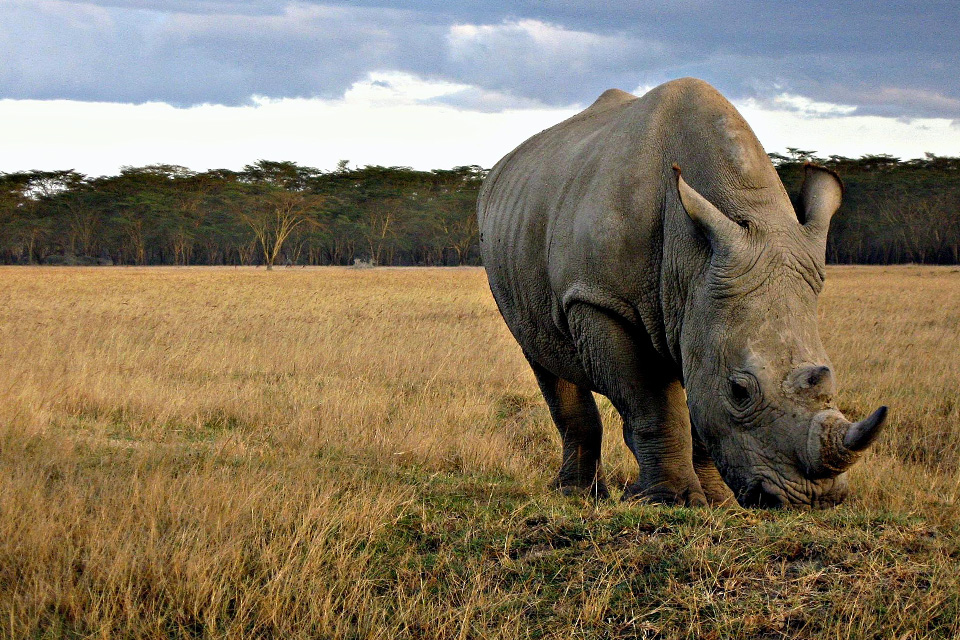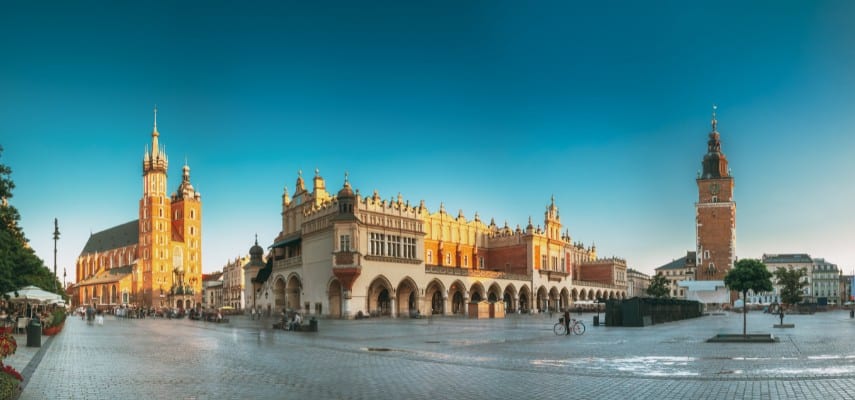
Kenya. The very name conjures images of vast savannahs teeming with wildlife, the iconic silhouette of acacia trees against a fiery sunset, and the vibrant tapestry of Maasai culture. It’s a land that ignites the adventurer’s spirit and soothes the soul with its breathtaking natural beauty. While the allure of Kenya is undeniable, the perceived cost of such an epic journey can often be a deterrent. However, with a little savvy planning and the right knowledge, experiencing the magic of Kenya without breaking the bank is not just a dream, but a tangible reality. This comprehensive guide will unlock the secrets to finding cheap flights to Kenya, and then help you craft an unforgettable adventure, from its rich history to its most captivating attractions, and all the practicalities in between.
The Quest for Cheap Flights: Navigating the Skies to Kenya
Securing affordable flights to Kenya is the cornerstone of a budget-friendly trip. While last-minute deals can sometimes emerge, a proactive approach is key. Here’s how to maximize your chances:

Related Articles about The Call of the Wild and the Whisper of Savings: Your Guide to Cheap Flights to Kenya:
- Bali: Island of the Gods, A Symphony of Serenity and Adventure
- Lima: A Culinary and Cultural Odyssey – Your Ultimate Travel Guide
- Los Angeles: Your Ultimate Guide to the City of Angels
- Iceland: A Traveler’s Guide to the Land of Fire and Ice
- Journey to the Heart of Eurasia: A Comprehensive Guide to Traveling in Russia
-
Flexibility is Your Friend: The single most impactful factor in finding cheap flights is flexibility with your travel dates. Mid-week flights (Tuesdays and Wednesdays) are often significantly cheaper than weekend departures. Similarly, traveling during the shoulder seasons (April-May and September-October) generally offers lower prices than the peak tourist months (June-August and December-February). Avoid major holidays and school breaks if possible.
-
Embrace the Advance Booking Strategy: Airlines typically release their cheapest fares months in advance. Aim to book your flights at least 3-6 months ahead, especially if you’re traveling during popular periods. Setting up fare alerts with flight comparison websites can be invaluable for tracking price drops.
-
The Power of Comparison Websites: Don’t rely on a single booking platform. Utilize a variety of flight comparison websites like Skyscanner, Google Flights, Kayak, and Momondo. These sites aggregate deals from numerous airlines, allowing you to compare prices and identify the best options.

-
Consider Indirect Routes and Layovers: Direct flights are convenient but often come at a premium. Be open to flights with one or two layovers. While they might add a few hours to your journey, the savings can be substantial. Major hubs like Amsterdam, London, Doha, and Istanbul often have competitive connections to Nairobi (NBO) and Mombasa (MBA).
-
Explore Different Airports: While Jomo Kenyatta International Airport (NBO) in Nairobi is the primary gateway, consider if flying into Moi International Airport (MBA) in Mombasa makes more sense for your itinerary, especially if your focus is on the coast.
-
Airline Loyalty Programs and Miles: If you frequently travel, accumulating airline miles or points through loyalty programs can significantly reduce flight costs. Consider which airlines fly to Kenya most frequently and align your travel with their programs.
-
Budget Airlines and Hidden Costs: While budget airlines can offer tempting fares, be mindful of additional costs such as baggage fees, seat selection, and in-flight meals. Factor these into your overall budget.
-
Incognito Mode and Browser History: Some believe that searching for flights in incognito mode or clearing your browser history can prevent airlines from tracking your searches and potentially increasing prices. While debated, it’s a harmless practice that might offer an edge.
A Glimpse into Kenya’s Rich Tapestry: History and Culture
Kenya’s history is a captivating narrative of ancient civilizations, colonial influences, and the triumphant struggle for independence. For millennia, the land was inhabited by indigenous communities, each with their unique languages, traditions, and social structures. The arrival of Arab traders along the coast in the 8th century introduced Islam and fostered thriving port cities like Mombasa, which became a vital hub for trade in spices, ivory, and slaves.
The Scramble for Africa in the late 19th century saw European powers carve up the continent, and Kenya became a British protectorate, later a colony. The British introduced large-scale agriculture, particularly for tea and coffee, and established Nairobi as a major administrative center. However, this period was marked by land alienation and exploitation of African labor, leading to growing resentment.
The Mau Mau Uprising in the 1950s was a pivotal moment in Kenya’s struggle for independence. This armed resistance, though brutally suppressed by the British, ignited a nationalistic fervor that ultimately led to Kenya gaining self-rule on December 12, 1963. Jomo Kenyatta, a prominent leader in the independence movement, became the nation’s first president.
Today, Kenya is a vibrant multicultural nation, a melting pot of diverse ethnic groups including the Kikuyu, Luhya, Luo, Kalenjin, and Maasai, each contributing to the rich cultural mosaic. The Swahili language, a blend of Bantu and Arabic, serves as the national lingua franca, fostering unity across the country.
The Heartbeat of Africa: Top Attractions in Kenya
Kenya’s unparalleled natural beauty and diverse landscapes offer an abundance of unforgettable experiences. Here are some of its most iconic attractions:
-
Maasai Mara National Reserve: Undoubtedly the crown jewel of Kenya’s wildlife tourism. The Maasai Mara is world-renowned for the Great Wildebeest Migration, where millions of wildebeest, zebras, and gazelles traverse the plains in search of greener pastures, often facing the dramatic river crossings of the Mara River. Expect to witness lions, leopards, elephants, rhinos, buffalo, and a myriad of other animals in their natural habitat.
-
Amboseli National Park: Famous for its large elephant herds and stunning views of Mount Kilimanjaro (which straddles the border with Tanzania). Amboseli offers a more intimate wildlife viewing experience, with open plains and scattered acacia trees providing excellent photographic opportunities.
-
Tsavo National Parks (East and West): These are the largest national parks in Kenya and are known for their vast, rugged landscapes and rich biodiversity. Tsavo East is famous for its "red elephants" – elephants that bathe in the red dust of the region – and the Aruba Dam, a popular watering hole. Tsavo West boasts more varied terrain, including volcanic hills, lava flows, and the Mzima Springs, a crystal-clear oasis teeming with fish and crocodiles.
-
Lake Nakuru National Park: A birdwatcher’s paradise, famous for its vast flocks of flamingos that paint the lake pink. While the flamingos can be elusive at times, the park also offers excellent chances to spot rhinos (both black and white), Rothschild giraffes, lions, and leopards.
-
Samburu National Reserve: Located in the arid north, Samburu offers a unique wildlife experience with species found only in this region, such as the reticulated giraffe, Grevy’s zebra, Somali ostrich, and the Beisa oryx. The rugged, arid landscapes are a stark contrast to the southern savannahs.
-
Diani Beach and the Kenyan Coast: For those seeking relaxation and turquoise waters, the Kenyan coast offers pristine white-sand beaches fringed by palm trees. Diani Beach, in particular, is a popular destination with a range of water sports, charming resorts, and opportunities to explore nearby coral reefs through snorkeling and diving.
-
Nairobi National Park: A unique urban oasis, this park is the only national park in the world with a city skyline as its backdrop. It’s a convenient and accessible introduction to Kenya’s wildlife, with lions, giraffes, zebras, and buffalo often seen grazing just a short drive from the city center.
-
Lamu Archipelago: A UNESCO World Heritage Site, Lamu offers a glimpse into a bygone era with its ancient Swahili architecture, narrow winding streets, and a relaxed pace of life. Explore the historic town of Lamu, take a dhow cruise, and soak in the unique cultural atmosphere.
Essential Travel Tips for a Seamless Kenyan Adventure
To ensure your trip to Kenya is enjoyable and stress-free, keep these practical tips in mind:
-
Visas: Most nationalities require a visa to enter Kenya. The easiest way to obtain one is through the e-visa system online before your travel. Check the latest requirements for your nationality well in advance.
-
Health and Vaccinations: Consult your doctor or a travel clinic at least 4-6 weeks before your trip to discuss recommended vaccinations and malaria prophylaxis. Yellow fever vaccination is often mandatory for entry.
-
Malaria Prevention: Malaria is prevalent in many parts of Kenya, especially at lower altitudes and along the coast. Take antimalarial medication as prescribed and use insect repellent containing DEET, especially during dawn and dusk. Sleep under mosquito nets.
-
Currency: The local currency is the Kenyan Shilling (KES). While US Dollars are widely accepted in tourist areas, it’s advisable to carry some Shillings for smaller purchases and local markets. ATMs are readily available in major towns and cities.
-
Safety: Kenya is generally a safe country for tourists, but like any destination, it’s important to be aware of your surroundings and take basic precautions. Avoid displaying expensive jewelry, be cautious in crowded areas, and use reputable transportation. It’s wise to stick to well-trodden tourist routes and avoid walking alone at night in unfamiliar areas.
-
Respect Local Culture: Kenya is a diverse country with rich cultural traditions. Dress modestly when visiting villages or religious sites. Learn a few basic Swahili phrases like "Jambo" (hello) and "Asante" (thank you) – they are always appreciated.
-
Tipping: Tipping is customary in Kenya. For safari guides and lodge staff, a tip is a good way to show appreciation for their service. Amounts vary, but a general guideline is 10-20% in restaurants and $5-10 per day for safari guides and trackers.
-
Photography: Always ask for permission before taking photos of people, especially in rural communities. Be mindful of signs prohibiting photography in certain areas.
-
Water: Drink bottled or purified water only. Avoid ice in drinks unless you are sure it’s made from purified water.
-
Driving: If you plan to drive yourself, be prepared for varying road conditions. It’s often safer and more convenient to hire a driver or use reputable tour operators for transfers and excursions.
Accommodation Options: From Budget to Bliss
Kenya offers a wide spectrum of accommodation to suit every budget and travel style:
-
Budget Guesthouses and Hostels: In cities like Nairobi and Mombasa, and even in smaller towns near national parks, you can find clean and friendly guesthouses and hostels offering dormitory beds and private rooms at very affordable prices.
-
Mid-Range Hotels and Lodges: Most towns and tourist hubs have a good selection of mid-range hotels offering comfortable rooms, amenities like Wi-Fi, and often on-site restaurants. Safari lodges within or near national parks often fall into this category, providing comfortable bases for game drives.
-
Luxury Safari Camps and Lodges: For an immersive wildlife experience, consider luxury tented camps or lodges. These offer unparalleled comfort, gourmet dining, and often exclusive game drives with expert guides. While more expensive, they provide a truly memorable experience.
-
Self-Catering Apartments: For longer stays or families, self-catering apartments can be a cost-effective option, especially in cities. This allows you to prepare some of your own meals, saving on dining expenses.
-
Camping: For the truly adventurous and budget-conscious, camping is an option in designated campsites within national parks or private conservancies. This requires carrying your own gear or renting it locally.
Navigating Kenya: Transportation Options
Getting around Kenya can be an adventure in itself. Here are your main transportation choices:
-
Matatus: These are ubiquitous minibuses that serve as public transport in towns and cities. They are the cheapest way to get around but can be crowded and chaotic. They are an experience, but not for the faint of heart!
-
Taxis: Taxis are readily available in urban areas. Agree on the fare before starting your journey, or ensure the meter is used. Ride-hailing apps like Uber and Bolt are also popular in Nairobi and Mombasa.
-
Buses: Long-distance buses connect major towns and cities. Companies like Easy Coach and Modern Coast offer more comfortable and reliable services than matatus for inter-city travel.
-
Flights: For covering long distances quickly, domestic flights are an option. Safarilink and Air Kenya operate flights to various national parks and coastal destinations. This is a more expensive option but saves significant travel time.
-
Safari Vehicles: For exploring national parks, hiring a safari vehicle with a driver/guide is essential. These are typically 4×4 vehicles equipped for off-road travel and offer excellent vantage points for wildlife viewing.
-
Car Rental: If you’re comfortable driving on the left side of the road and navigating Kenyan roads, car rental is an option, especially for exploring areas outside of national parks. However, ensure you have a reliable vehicle and good navigation skills.
The Sweet Spot: Best Time to Visit Kenya
The "best" time to visit Kenya largely depends on your priorities, particularly regarding wildlife viewing and weather.
-
The Great Migration (July to October): This is the peak tourist season and the most sought-after time to witness the epic wildebeest migration in the Maasai Mara. Expect large crowds and higher prices for accommodation and flights. The weather is generally dry and sunny, making for excellent game viewing.
-
Dry Season (January to March): Another excellent period for wildlife viewing as animals congregate around water sources. The landscapes are drier, making it easier to spot animals. The weather is warm and sunny, with minimal rainfall.
-
Shoulder Seasons (April to May and September to October): These periods offer a good balance of decent wildlife viewing and fewer crowds. You might catch the tail end of the migration in September/October. April and May mark the start of the long rains, so expect some showers, but they usually don’t last all day. Prices are generally more affordable.
-
Green Season (November to March): This is the "rainy season," particularly the long rains from March to May. While it might not be ideal for everyone, it’s a fantastic time for birdwatching, and the landscapes are lush and green. You’ll encounter fewer tourists and significantly lower prices. The rain often falls in short, heavy bursts, leaving the rest of the day clear.
In conclusion, the allure of Kenya is a siren song that beckons to every traveler. By understanding the nuances of finding cheap flights, embracing its rich history, and planning your itinerary with practical travel tips in mind, you can unlock the magic of this extraordinary East African nation without compromising your budget. From the thundering hooves of the Great Migration to the serene beauty of its coastline, Kenya awaits, ready to offer an adventure that will resonate long after you’ve departed. So, start planning, be flexible, and get ready for an unforgettable journey to the heart of Africa.





